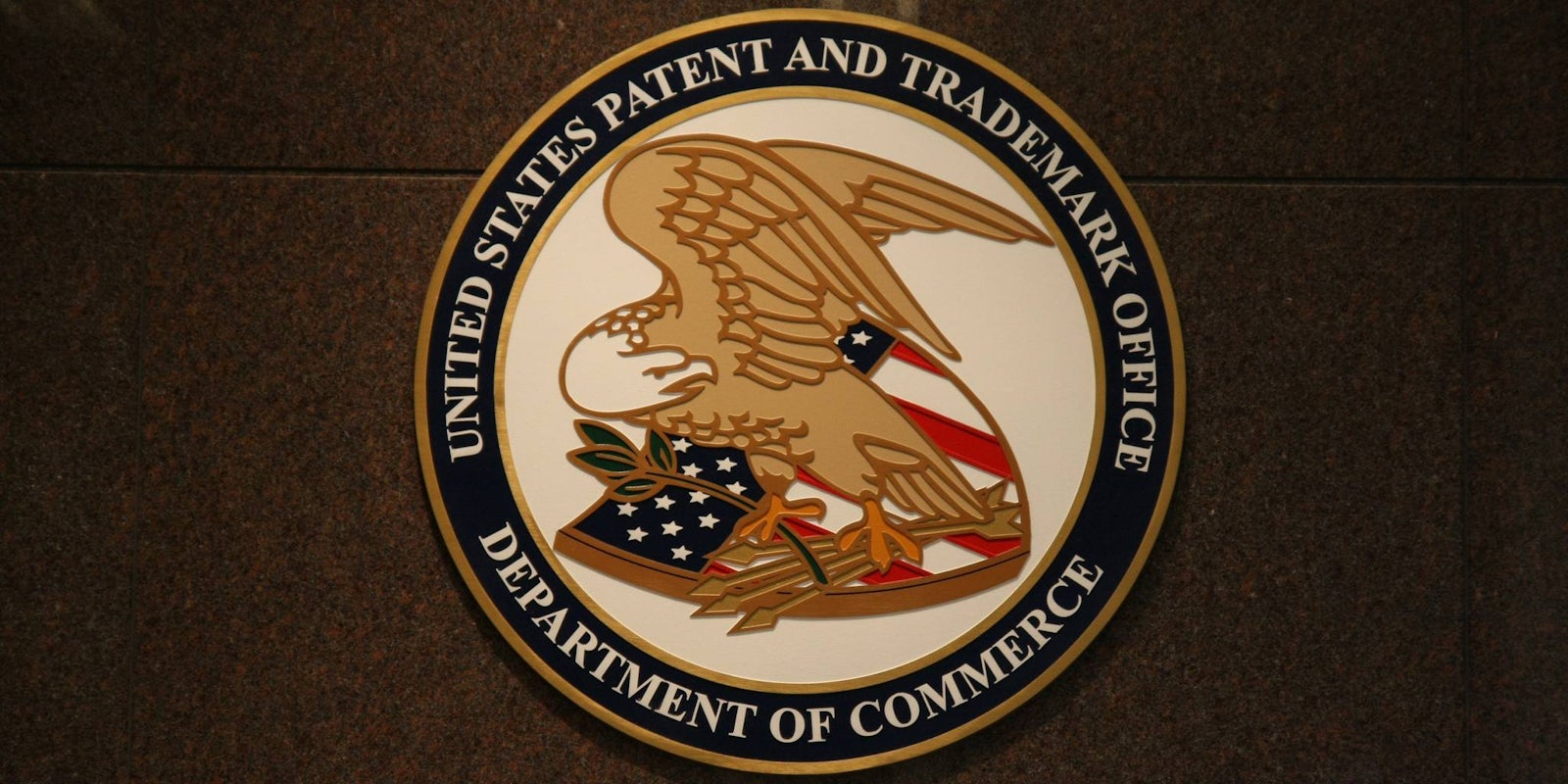The patent system in the United States, originally designed to protect and encourage innovation, is in need of fixing. Getting that task done through legislation has failed, so one man decided to take a crack at it himself by making new ideas harder to patent.
Alexender Reben, an engineer and artist, is currently attempting to generate every possible new prior art—the publicly available information relevant to a patent’s claim of originality—and publish it under a Creative Commons license for free distribution. Doing so makes the concepts described in the prior art much harder to patent, while also highlighting how broken the current patent system really is.
To make it happen, Reben built an algorithm that randomly pulls texts from the U.S. patent corpus. “It then looks at the text and removes anything it finds extraneous (such as references to figures and such) and then assembles the words into paragraphs and saves the result,” he explained to the Daily Dot.
Each individual result of the algorithm’s work is timestamped at the point of creation and given a universally unique identifier, then published to Reben’s site All Prior Art.
Here’s an example of the text the process produces:
A packing for a stack of tissue paper or nonwoven, where the top andor bottom layer is provided on its outside with at least one glue layer, which packing comprises a packing wrapper. The method includes transmitting, from a subscription information store entity of the system to a service provision entity of the system, a first message containing data specifying characteristics of a pairing of a first private user identity and a public user identity. The controller module provides an output to terminate power from the power source based upon the DC Link output voltage and a sensed current from the AC input current sensor. Elements that match the search term are made visible in an updated property grid while those that do not match are not presented. Each of the connectors includes a printed circuit board, a plurality of pairs of contacts on the PCB, a plurality of pads disposed at edge portions of the PCB for compensating crosstalk, and a plurality of connecting parts for connecting electrically the pads to the pairs of contacts.
To be clear, Reben’s intent isn’t to completely upend the patent system; the exercise is primarily an attempt to take the clearly computer-generated ideas out of play. “I believe the original intent of the patent system was to foster human creativity by protecting ideas,” he explained. “By publishing algorithmically generated ideas, they are inherently devoid of human creativity and thus don’t really deserve to be patented.”
One of the primary targets of Reben’s work is patent trolling, an obnoxious act that has become a prevalent part of the patent system in recent years. Generally a patent troll—either an individual or a company—will lay claim to an idea and attempt to enforce a patent well beyond its actual value. In most cases, the patent squatters are non-practicing entities; they produce no product or service based on the patents, they just lay claim to patents with the intent to license use for a fee or sue.
The practice reached an all-time high last year according to Unified Patents, an organization that helps companies deal with patent trolls. The group found that of the over 3,000 patent lawsuits filed in the first half of 2015, 68 percent of them were from non-practicing entities. Even more shocking, a full 90 percent of high-tech patent cases were filed by patent trolls.
The United States Patent and Trademark Office (USPTO) has taken some steps under new director Michelle Lee, a former Google executive who was sworn in to her role in 2015. Lee implemented the Enhanced Patent Quality Initiative, an effort improve innovation and reduce needless litigation by improving the measurements of a patent’s value. The initiative recently did away with the quality measurement used during the massive rise of patent trolls and is currently seeking new ways of scoring patents.
That may mark a step in the right direction, but it leaves much to be desired in the meantime as average people and potential businesses are being essentially extorted with expensive lawsuits. Research conducted at Boston University in 2011 found that patent trolls had cost $500 billion since 1990, a number that has grown exponentially since.
Unfortunately, a change in the law seems unlikely. The last attempt at a patent reform bill was presented in 2014. Despite finding bipartisan support in the House of Representatives, it was killed by Senate Judiciary Committee before even getting a vote thanks to the lobbying efforts of trial lawyers and the pharmaceutical industry.
Reben’s algorithmic attempt at overhauling the patent system isn’t the most efficient method at fixing all of this, and he admitted that publishing all prior art is a “practical impossibility,” which he compared to the “monkeys typing Shakespeare” experiment. But it’s something.
If nothing else, his system shows just how easy the patent system can be manipulated. “With more computational power than I have, coupled with a more finely constrained problem space (say only patents relating to shoes), it is not unforeseeable a company with an agenda could fill a lot of the space around that topic,” he explained.
“The intent of the system is as an artwork, to start a dialog going with those who can implement change and know what is needed,” Reben said.
The countdown clock for some troll to realize they have a patent for a process that sounds vaguely enough like Reben’s algorithm has officially begun.
H/T Gizmodo
